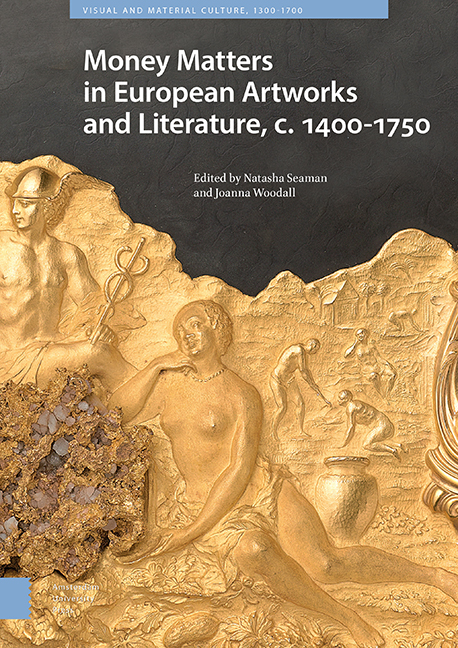1 - Weighing Things Up in Maarten de Vos’s Tribunal of the Brabant Mint 1594
Published online by Cambridge University Press: 15 September 2022
Summary
Abstract
The weighing scales held by the female figure in Maarten De Vos's Tribunal of the Brabant Mint are attributes of both Justice and Moneta. This chapter expands on the conventional interpretation of the picture as a “justice panel” by comparing it to the precious coins on which the Minters relied. Like a coin, the picture was not only a quasi-sacred entity but also a form of rhetoric designed to achieve specific ends at particular moments of exchange. The image solicited trust in absolute authority but was also evaluated and used by all-too-human subjects. The chapter opens up the interpretative space of an ideal courtroom, in which the picture has previously been sequestered, to the complex politics and ethics of the Mint in 1594, when the new Habsburg governor Ernest of Austria made his Joyous Entry into Antwerp.
Keywords:Maarten de Vos, Mint, Joyous Entry, Moneta, Justice, virtue
Introduction
When the Antwerp Mint's valued possessions and archive were removed shortly before the sale of the premises on 4 December 1797, the local antiquarian Jan Baptist van der Straelen (1761-1847) noted that the goods included “a fine painting depicting justice, painted in the year 1594 by Martin de Vos, which was decorated on either side with portraits of the serving members of the Serment as well as that of the painter […].” This picture is known as The Tribunal of the Brabant Mint, the institution responsible for manufacturing gold and silver coins under the authority of the Duke of Brabant in present-day Belgium (fig. 1.1). Its painter, Maarten de Vos (1532-1603), was the city of Antwerp's leading master. The members of the Serment (Oath) were current officeholders within the college of ninety minters, each of whom had solemnly sworn loyalty to the Duke. Founded in 1291 by Duke Jan I of Brabant (1252/1253-1294), the consortium of Brabant Mints was already a venerable institution. In 1411 a subsequent duke had extended to the workmen and minters, their wives and households, the immense privilege of jurisdiction over their own affairs except for crimes of murder, rape or larceny. Members of the Mint also became exempt from military service and all property taxes, including excise tax on beer and wine. The Minters gained the right to bear arms and the position of Minter was largely the preserve of certain families, passed down from generation to generation, like a noble title.
- Type
- Chapter
- Information
- Publisher: Amsterdam University PressPrint publication year: 2022



